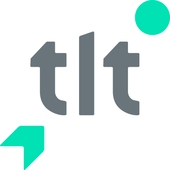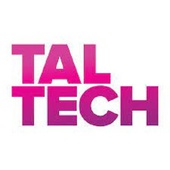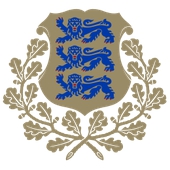UTILITAS TALLINN AS
Activity history
Company management, team and contacts
UTILITAS TALLINN AS current status
This company's branding has already reached 9,115 peopleand his is followed by 204 Storybook users.On average, the company has been rated 5.0 points.but there is no comment.
Strategic decision: We will cease business operationsBoard member JANEK TRUMSI (12.05.2025): "With a carefully considered decision based on a number of factors, we plan to cease operations."
's activity report 2022
AS Utilitas Tallinn (hereinafter UTL) is part of the Utilitas energy group and is a 100% subsidiary of the holding company OÜ Utilitas.
UTL supplies heat to a large part of Tallinn and Maardu heat consumers by providing district heating services. The company manages approximately 512 kilometers of district heating network, of which 65.3% are fully renovated/pre-insulated or new pipelines (in 2021, 477.5 km and 62%). For the provision of district energy services, UTL operated 1 cogeneration plant, 3 central boiler houses (Mustamäe,
Ülemiste, Kristiine) and 40 small boiler houses, 3 cooling stations and 2 solar power plants. As of the end of 2022, UTL provided district heating services to approximately 4,700 buildings (in 2021, 4,300), including approximately 170,000 households (in 2021, 163,000).
District heating is produced in central production equipment, which allows the use of the best possible technology, the use of low-value fuels and waste heat, and the application of the advantages of cogeneration, thereby reducing the negative impact on the environment. UTL's district heating and cooling system has been recognized with the energy efficiency labels “Efficient District Heating” and “Efficient District Cooling”. The energy network recognized with these labels meets the conditions set out in the EU Energy Efficiency Directive 2012/27/EU, according to which an efficient district heating or cooling system uses at least 50% renewable energy, 50% waste heat, 75% cogeneration heat or 50% such energy and heat combination. UTL's district heating system uses locally renewable fuels at base load, such as wood chips produced from forest and wood industry residues, as well as waste heat generated in the cogeneration process of electricity and heat and in the district cooling process.
According to the Energy Efficiency Directive 2012/27/EU, the European Union's decision on the distribution of efforts to reduce emissions set binding emission reduction targets for Member States for the period 2021-2030, bringing the European Union closer to fulfilling its obligation under the Paris Agreement to reduce greenhouse gas emissions by at least 40% by 2030 compared to 1990 levels. However, in July 2021, the European Commission presented the “Target 55” package, under which the European Union will review its climate, energy and transport legislation with the aim of becoming carbon neutral by 2050, while also committing to reduce greenhouse gas emissions by 55% by 2030.
Key elements of the climate package are closely aligned with the carbon neutrality plan “From Little to Zero” created by the Utilitas energy group in 2021. According to the plan, new renewable energy capacities will be developed gradually to produce only renewable energy and reduce emissions to zero through investments, and to achieve carbon neutrality in Tallinn's district heating by 2030 at the latest.
As a member of the European Union, Estonia participates in achieving common goals and implementing a common energy policy. The long-term vision of Estonia's climate policy was agreed at the national level in 2017 in the long-term strategy document “Principles of Climate Policy until 2050”. The principles of climate policy agreed to promote the gradual wider use of domestic renewable energy sources in all sectors of final consumption, taking into account the growth of societal well-being and the need to ensure energy security and supply reliability. The aim is to promote the widespread use of domestic bio- and other renewable energy resources in electricity and heat production as well as transport fuels, as well as the development of renewable energy production technologies and the knowledge-based, efficient and sustainable valorization of biomass. Estonia's long-term goal is to achieve climate neutrality by 2050.
In May 2022, the European Commission presented the “REPowerEU” plan, which aims to provide solutions to the emerging energy crisis, including
strengthening the EU's strategic autonomy in the energy sector, supporting the transition to clean energy and strengthening cross-border cooperation to achieve a more resilient energy system. The objectives of “REPowerEU” include energy savings, diversification of energy sources and faster adoption of renewable energy sources. The “REPowerEU” plan accelerates the green transition and stimulates extensive investment in renewable energy. Renewable energy is the cheapest and cleanest energy that can be produced locally and helps reduce the need for energy imports. Faster and more extensive use of renewable energy in electricity production, industry, buildings and transport increases energy independence more quickly and boosts the green transition. Among other things, the Commission proposed in the “REPowerEU” plan to increase the binding energy efficiency target of the European Green Deal package “Target 55” from 9% to 13% and to increase the 2030 renewable energy target from 40% to 45%.
Estonia's renewable energy target is set in the Energy Sector Organization Act. In October 2022, an amendment to the Energy Sector Organization Act came into force, setting a new target for the importance of renewable electricity for 2030.
According to the new target set in this, by 2030 renewable energy will make up at least 65% of the total final energy consumption in the country instead of the previous 42%, renewable energy will make up at least 100% of the total final electricity consumption instead of the previous 40% and at least 63% of the total final heat consumption.
In the challenging operating environment of 2022, with high raw material and energy prices and difficult raw material availability, UTL's focus was primarily on ensuring continuity and supply reliability, as well as necessary preparatory activities to accelerate the development projects of new renewable energy capacities under the carbon neutrality plan and to implement them in the coming years.
Already in 2021, all market participants were hit by an unexpected rise in energy carrier prices and for the first time the European Union expressed concern about Europe's high dependence on imported fuels. The full-scale war initiated by Russia in Ukraine on February 24, 2022, also sent gas and liquid fuel prices soaring. In addition to the turbulent gas price, the price of wood chips also broke all previous price records in 2022, growing almost threefold. Unprecedentedly high
The company's largest partners
Add a new partner
Dropdown
File a complaint
Choose the comment attribute that you think it contains:
You want to report an inappropriate comment.
Are you sure?
Are you sure you want to delete this article?












